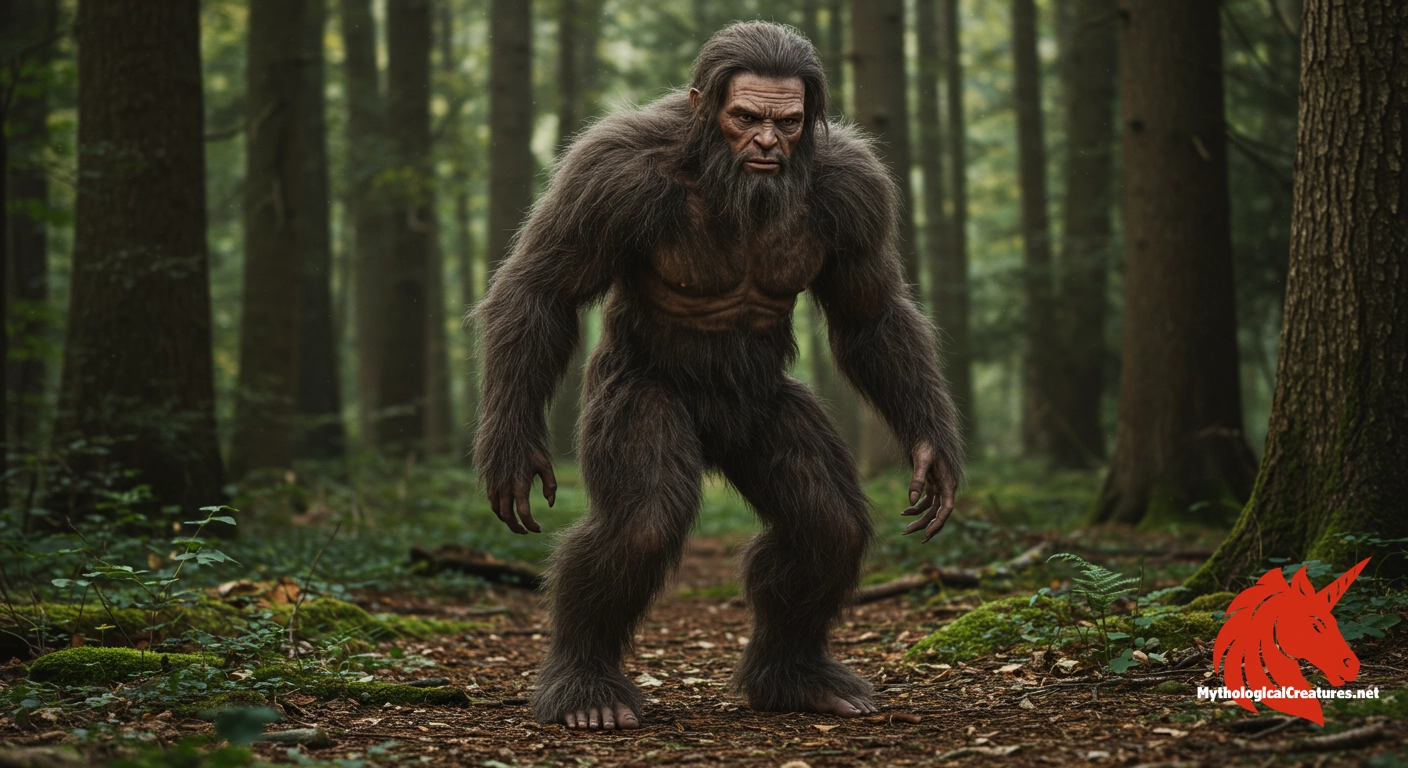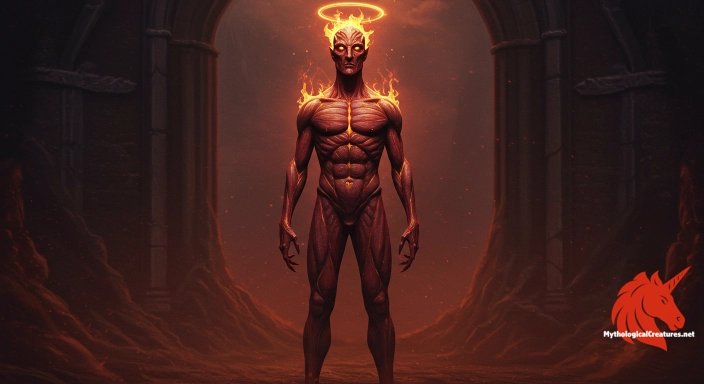Wild man: The Wild Man is a legendary figure from medieval European folklore known for his untamed and hairy appearance.

Wild man
Wild man - The Wild Man embodies the raw forces of nature and the boundary between civilization and the wild, serving as both an artistic motif and a heraldic symbol.
Origins & First Encounters
The wild man is a striking emblem of nature’s raw and untamed force, emerging from the depths of medieval European imagination. His many appellations, including woodwose and wodewose, evoke a sense of primal mystery that has fascinated audiences for centuries. This figure appears to have roots deep in prehistoric mythos, yet his character was refined and popularised by medieval artists and storytellers. His image was utilised to symbolise the intricate boundary between civilisation and the wilderness, a duality that both unsettled and captivated the medieval mind. Artistic depictions reveal him as neither purely beast nor fully human, reflecting society’s ambivalence about the natural order. In many representations, he embodies the spirit of the forest and the freedom of nature unbridled by societal norms. The wild man’s early attestations in carvings and manuscripts underscore a tradition steeped in the oral and visual heritage of Europe. His enigmatic presence has lent itself to numerous allegories concerning the balance between refinement and savagery. Over time, he evolved into a cultural icon, merging both fear and fascination in the collective consciousness. His enduring allure is a testament to the complex interplay between the human desire for order and the irresistible pull of the primordial world.
Source Texts & Tale Variants
Early depictions of the wild man are found in carved roof bosses and religious structures such as Canterbury Cathedral, where his image danced in tandem with the vegetative Green Man. Manuscripts and illuminated texts from the medieval era offer subtle narrative hints that blend the wild man with broader themes of nature and chaos. Renaissance engravings by artists including Martin Schongauer and Albrecht Dürer expanded his iconography, ensuring that his image would be disseminated widely across Europe. Not only have visual arts preserved his likeness, but heraldic devices across parts of Germany also adopted his fierce visage as a symbol of wild lineage. Diverse literary sources, while sometimes fragmented, provide variations of his myth where he appears as a solitary figure or even as part of a wild family. Some narratives integrate him into a larger system of woodland spirits and creatures, highlighting his multifaceted role in myth and allegory. Varied manuscripts offer rich, if sometimes conflicting, details—ranging from his physicality to his moral implications within society. Folk tales in different regions further refine his character, often imbuing him with local mythic energies. This mosaic of sources not only illustrates the widespread appeal of the wild man but also underscores the adaptability of his myth across different artistic and cultural traditions. His legend, preserved through these diverse mediums, continues to intrigue scholars and enthusiasts alike.
Form & Powers
The physical presence of the wild man is as arresting as it is enigmatic, typically presenting him as entirely cloaked in wild, unruly hair from head to toe. His visage combines a human-like structure with feral features, where eyes often gleam with a mixture of wild instinct and human awareness. He is portrayed with a robust, muscular frame that blurs the line between man and beast, suggesting a power derived from untamed nature. In many depictions, dishevelled hair and thick, tangled locks serve to embed him within a world that is both chaotic and profoundly natural. Some artistic renditions even incorporate hints of animalistic attributes such as horns or antler-like protrusions, further enhancing his link to the forest. His extremities, often rendered with a slightly exaggerated form, embody the duality of delicate human features and the raw strength of a wild creature. The wild man’s look is purposely ambiguous, capable of evoking both admiration and unease. Detailed brushstrokes or carvings articulate the interplay of light and shadow on his body, highlighting sinews that recall ancient, untouched forests. The effect is one of a being caught perpetually between the realms of order and abandon. His physical attributes continue to dominate modern artistic reinterpretations, ensuring that his image retains an air of both mystery and power.
Regional Faces
Across the diverse landscapes of medieval Europe, the image of the wild man was adapted to suit local cultural narratives and symbolic landscapes. In northern regions, his portrayal often merged with older shamanistic or pagan elements, resonating with indigenous beliefs about the spirits of the forest. In the British Isles, the wild man sometimes intertwines with legends of the Green Man, producing layers of meaning that reflect cycles of regeneration and decay. Continental variations present subtle differences, with German interpretations linking him to heraldic traditions and noble mythologies, while Italian renditions tend to be more refined and allegorical. In some Eastern European traditions, the wild man acquired an almost mystical otherworldliness, interlacing with folklore that celebrated antiquated nature worship. These regional adaptations allowed the wild man to serve varied functions, from a guardian of the wild to a symbol of untamed freedom. His form might even transform slightly, incorporating local fauna or vegetation to mirror the specific environment of a given area. Such variations underline the flexibility of his mythos, capable of reflecting both universal human instincts and distinct regional identities. Each rendition highlights the interplay between local ecological realities and broader cultural themes. The regional diversity of his representations remains a rich avenue for understanding how myth adapts to the environment it inhabits.
Cultural Parallels
The wild man stands in intriguing parallel to numerous mythological figures across different cultural landscapes. Much like the classical satyrs or fauns of Greek and Roman mythology, he embodies the intersection of human reason and animal instinct. Comparable in his wild, unrestrained nature to Silvanus, the Roman god of woodlands, he functions as a personification of nature’s indomitable spirit. Similar motifs appear in the Celtic traditions with figures such as Cernunnos, whose horned visage also symbolises a confluence of fertility and the wild. Beyond Europe, global folklore presents its own versions of the wild man, whether in the elusive legends of mountain creatures or the mysterious forest-dwelling beings found in distant cultures. The archetype resonates with modern depictions of the beastly man, drawing on universal themes of freedom, survival, and the allure of the wilderness. These cultural parallels highlight a near-universal preoccupation with the duality of civilisation—tamed, structured, and rational—versus the unpredictable, vibrant pulse of nature. In each tradition, the wild man serves as a potent symbol of the human connection to the primal world, regardless of context. This comparative perspective enriches the myth, suggesting that while the details may vary, the foundational impulse behind the wild man is remarkably consistent across time and geography. His multi-faceted role invites continual reinterpretation and underscores a timeless fascination with what lurks at the border of order and chaos.
Legacy & Modern Evolution
The legacy of the wild man is as enduring as it is adaptable, evolving significantly since his medieval origins. Initially thriving in the intricate carvings and heraldic symbols of the Middle Ages, his image transformed during the Renaissance into a motif that balanced mystique with emerging humanistic ideals. Engravings by celebrated artists cemented his status as an enduring symbol, one that could be simultaneously wild and refined. In modern art and literature, the wild man has been reimagined as a metaphor for the unbridled aspects of human nature and the eternal allure of the wilderness. Contemporary interpretations often cast him as a countercultural icon, representing a return to nature and a rejection of overly mechanised society. His image appears in a variety of media, from graphic novels to film, where he is used to evoke themes of freedom, rebellion, and the ineffable qualities of the natural world. Psychological interpretations, particularly within Jungian frameworks, view him as an embodiment of the shadow self—a repository of instincts and emotions long repressed by civilisation. His recurring appearance in modern fantasy and speculative fiction has ensured that he remains a potent symbol in popular imagination. The wild man continues to inspire debates about environmental conservation, the loss of natural intimacy, and the intrinsic duality of humanity. In this way, his historical evolution mirrors our own shifting relationship with the untamed world, making him a timeless figure of cultural and artistic significance.
Interesting Fact
An interesting observation is that the Wild Man not only symbolised untamed nature but also played a significant role in heraldry, bridging the gap between myth and everyday symbolism throughout medieval Europe.
Support the directory
Promote your myth project and fund more research
Sponsor placements help keep this directory growing and free to use while giving your work a focused, relevant audience.
Learn how sponsorship worksQuick Creature Info
Origin:
Features:
Associations:
Our Mythic Legendary Rating:

Also Sometimes Known As:
Habitat:
Physical Attributes:
Abilities:
Behavior:
Lore:
References
Discover Another Mythical Legend You May Not Have Heard Of?
Uncover the mysteries of ancient folklore and expand your knowledge of legendary beings from cultures around the world.
Dare to Meet the Puriel....
Curated by the Mythological Creatures Team
Series editor: Mythological Creatures Directory
Primary desk: Northern & European Folklore Desk
(rev. November 2025)
